Sarasota Art Museum exhibits prove the power of direct experience
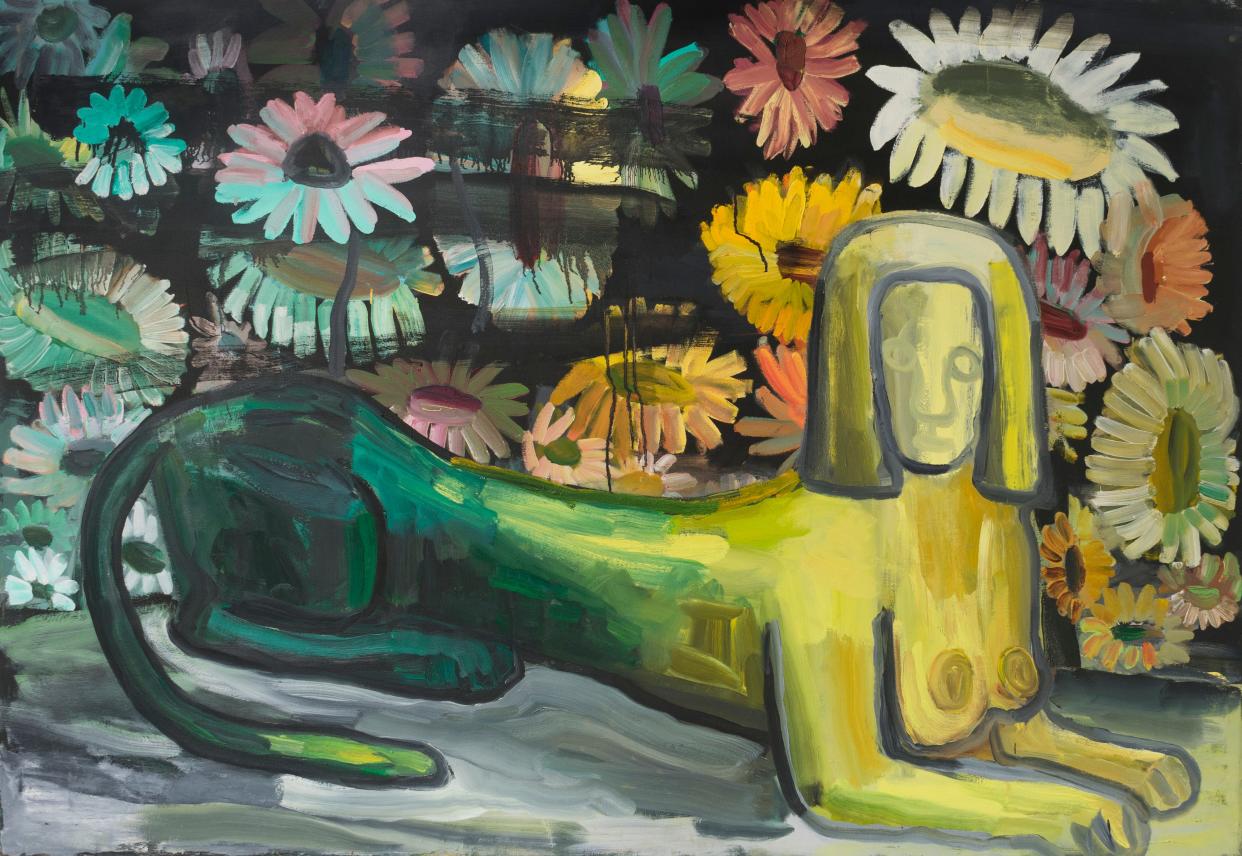
- Oops!Something went wrong.Please try again later.
Visual art that nobody sees is like a tree falling in a forest that nobody hears. That makes for a great Zen koan. But it doesn’t make an impact. Art’s an experience, not an idea. Sarasota Art Museum’s curators know that – and strive to put art in front of human eyeballs. For their current exhibitions, they’ve pulled some powerful pieces out of storage and put them on the walls. They also showcase paintings and installations from artists around the country that rarely travel to our region. The result is definitely an experience. Here’s a taste.
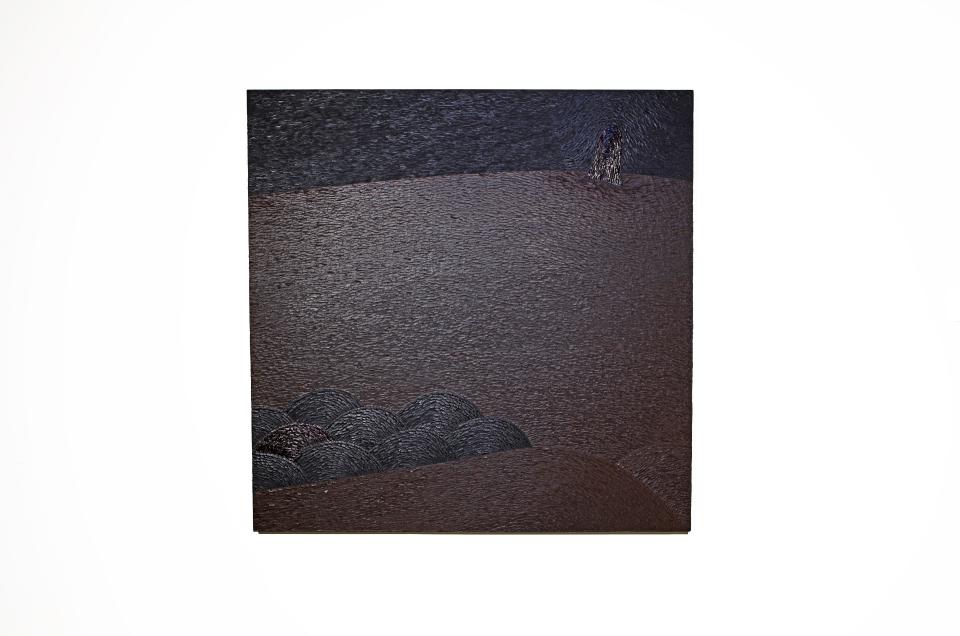
‘David Budd: Motion Within Stillness’
This exhibit celebrates rarely seen work by a homegrown artist. David Budd was a Ringling College graduate who studied under Syd Solomon. The abstract expressionist movement grabbed his imagination. But Budd, who died in 1991, got to that party late. The movement’s Big Names arrived early, and had already staked out their signature styles. Their art made the covers of Life and Look. Budd didn’t want to seem like an imitation Jackson Pollock or a knock-off Willem de Kooning. He needed to define his own unmistakable style. And he did.
This exhibition reveals the artistic territory Budd claimed. It’s curated by Tim Jaeger, the chief curator at Ringling College of Art and Design, and Emory Conetta, the assistant curator at the museum. They assembled this show with Budd’s paintings drawn from Ringling College’s collection. Those powerful pieces in storage we mentioned? They’re the ones.
Arts Newsletter: Sign up to receive the latest news on the Sarasota area arts scene every Monday
More on David Budd: Artist’s work a study in self-reflection
So how did Budd set himself apart? By setting himself apart.
Budd created his own abstract expressionist art. He never imitated any other abstract expressionists – especially the celebrities. They’d all found their own paths. Budd took the road less traveled. As a result? You’d never mistake his work for theirs.
Whatever the Big Names did, Budd did the opposite.
Abstract expressionists of national fame liked to get in your face with artistic pyrotechnics. Budd avoided setting off fireworks inside your eyeballs. He avoided color, too. No gestural splashes of red, yellow, blue that grabbed your eye from across the room. His work was nearly monochromatic. It was also dark.
Walking into this art show, you might think Budd’s paintings are entirely black. They’re not. They’re dense with variations and variegations. But to see those details, you need to be close. Standing across the room, you won’t get the picture.
Up close, Budd’s “Easter Island I” resolves into discrete shapes. It looks like a stained glass window created by an artist who wants to paint it black. A seascape, maybe? The curve at the top could be a horizon line, dark sea below, darker sky above. Concentric swirls at the bottom could be a sea serpent – whose head is popping up in the distance. Or it could all be nothing but shapes. But your mind can’t help imagining a scene.
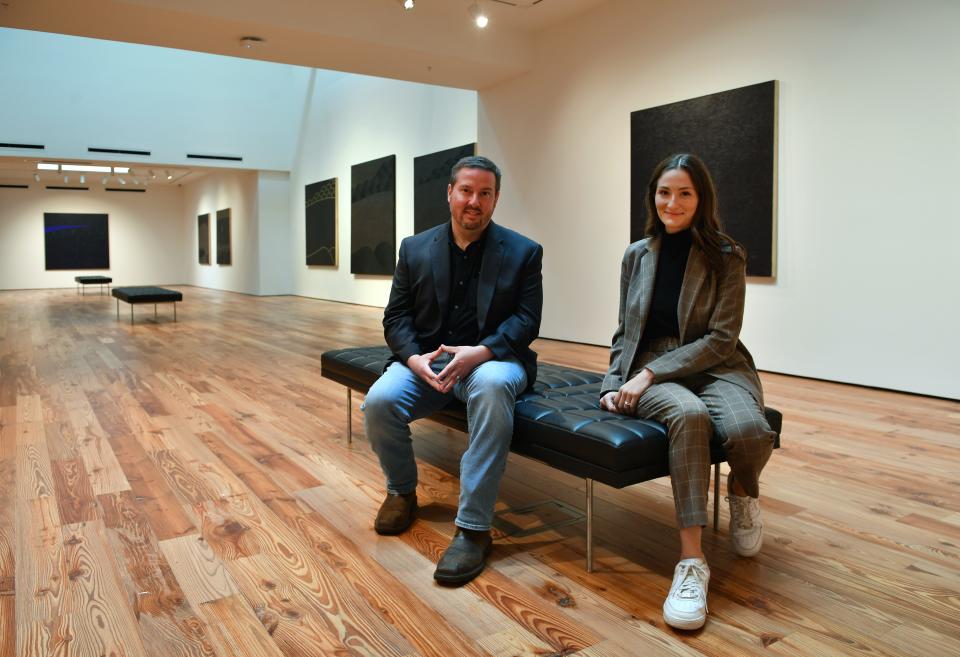
Two-dimensionality was also the height of abstract expressionist fashion. Art critic Clement Greenberg famously said, “Flatness is the defining characteristic of modern art.” (And Tom Wolfe famously made fun of him.) That said, Barnett Newman, Mark Rothko and other artists tried to confine their dreams to Flatland. Not Budd.
Meet Virginia Shearer: Ringling College names new director for Sarasota Art Museum
Museum gala: Out & About: The 2021 Sarasota Art Museum annual Soiree
Budd worked with a palette knife. He’d lay a big canvas on the floor. Knife in hand, he’d attack it, smear it, wipe sections away, and pile more gobs of paint on in layer after layer.
“Impasto” doesn’t begin to describe the results.
Budd’s paintings look like topographic maps made out of thick paint. They’re marked with ridges, gouges and grooves. His work is defiantly three-dimensional. There’s nothing flat about it.
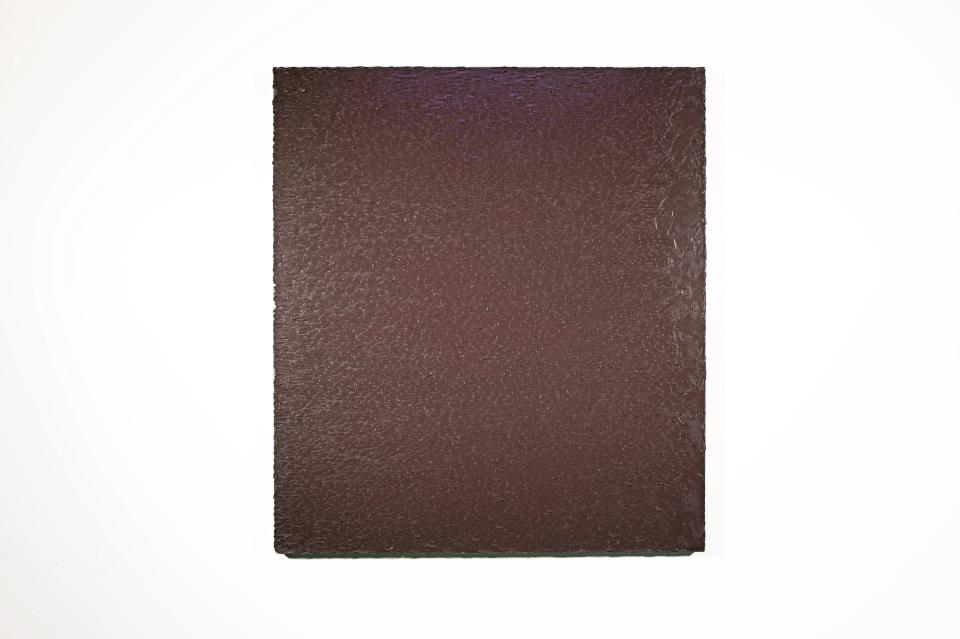
“Coffee Pot Island” is a perfect illustration, something the late Kevin Dean pointed out at a Budd exhibit he curated at the IceHouse in 2014. We stood in front of this painting. Then Dean got that familiar look on his face. The look of a riddling Sphinx.
“Look at it,” he said. “What do you see?”
A dark dragon’s scales, maybe?
“Keep looking. Now what do you see?”
Uh ... like a wall in a burned-out building that’s all blackened and blistered?
“OK. Now stand over here and look at it.”
Six degrees of John Ringling: Tracing the roots of Sarasota’s arts and culture explosion
Previously at the museum: Art Review: Celebrating the life aquatic at Sarasota Art Museum
I did. And finally grasped Dean’s lesson. A David Budd painting is never just one painting. Each canvas contains a multitude. Within a single piece, you’ll see countless paintings, depending on the light, time of day, and where you stand. But to see them, you really have to be there. A four-color reproduction in a catalog just doesn’t cut it.
Here endeth the lesson.
Seeing Budd’s art again, I know it’s still true.
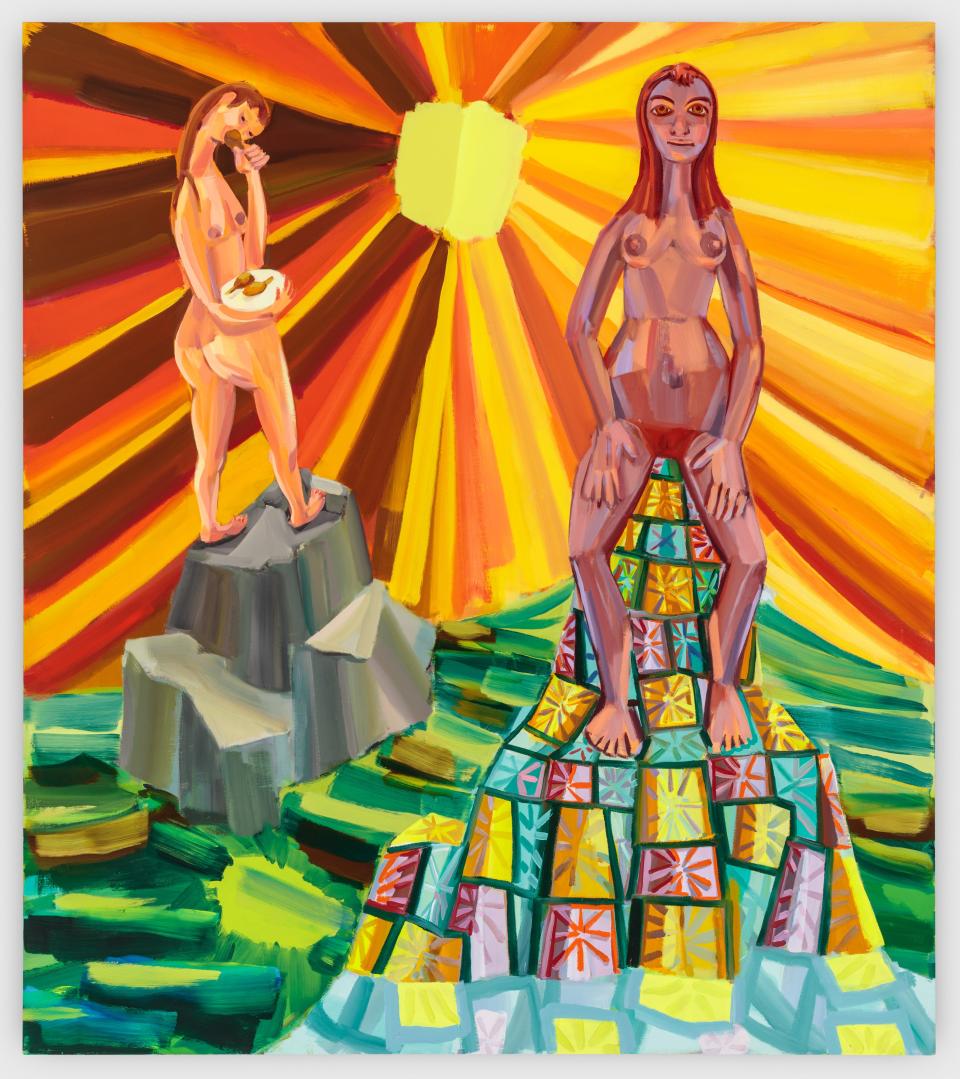
‘Judith Linhares: The Artist as Curator.’
Judith Linhares herself curated this two-part exhibition, with a strong contribution by Emory Conetta. It opens with a survey of the artist/curator’s powerful work.
Linhares hit her stride in San Francisco in the 1960s and ’70s. This portion of the exhibition tracks the milestones of her long-distance run starting from there. It combines a breakdown of Linhares’ artistic evolution with a portrait of the artist as a person. Not a lone wolf, but a member of the Bay area creative community. “No artist is an island.” If this show has a theme, that’s it.
Linhares’ art takes the form of big, bold, canvas paintings, usually oils, with a few acrylics, Lucid wall notes reveal the influences of other artists in her San Francisco circle. At the time, many respectable art critics thought those influences were bad.
It was a time of rebellion. And Linhares belonged to a rebel tribe.
That tribe included fearless feminists like Judy Chicago, and underground cartoonists like R. Crumb and S. Clay Wilson. Chicago and others opened an artistic arsenal to fight male power. Rude cartoonists proved the joy of breaking that era’s rules of artistic respectability.
Those rules were largely unwritten. And included severe limitations for acceptable depictions of women in visual art. Nude women should either be sexy or saintly. Women should be defined by their relationship to a man (or men) in the artwork. Women shouldn’t seem too relaxed.
Those are just a few of the rules. But Linhares didn’t want to play that game. Her languid, nude women have big eyes and legs that don’t quit. In a Playboy magazine they’d be sexy, but they’re not centerfolds. They’re not here for you to look at. And they actually seem relaxed! They just lie around like they’ve got nothing to do and all the time in the world. No kids crying “Mommy.” No patriarchal boss snapping his fingers. What planet is this? Funny you should ask.

Linhares’ vistas are alien indeed. And “Cove” is as otherworldly as it gets.
Ribbons of rusty clouds in a clockwork orange sky. Three suns shine down on two women stretched out on a crystalline rock. One sits, another reclines. They’re naked and vulnerable. These women should be terrified in this weird realm. But they don’t have a worry in the world – whatever world this is. They’re as calm as the woman in Henri Rousseau’s “The Dream.”
No accident. Dreamers have a family resemblance.
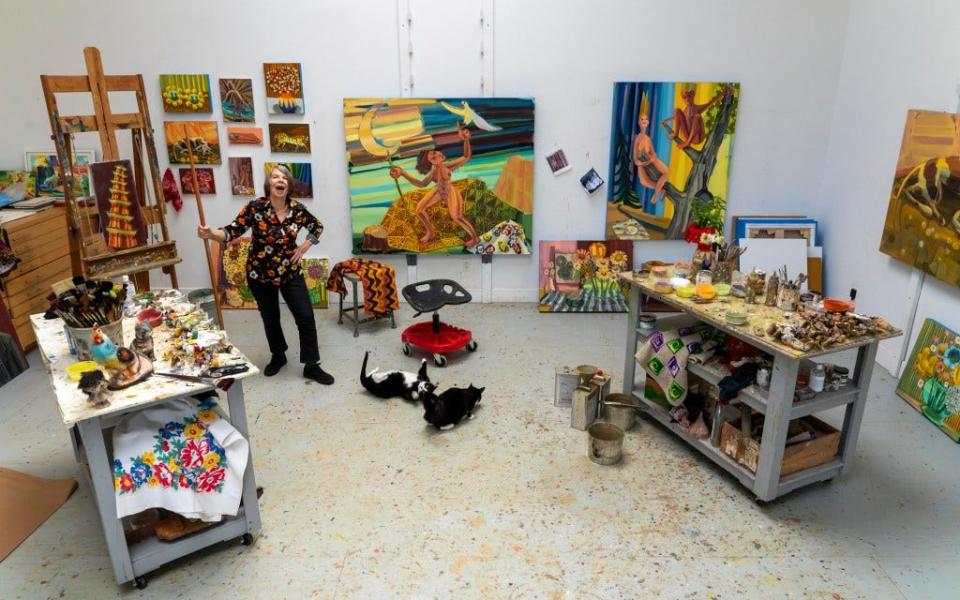
And Linhares has been dreaming for decades. She not only remembers her dreams. She writes them down in a dream journal and illustrates them, too. Those night visions infuse her paintings. What do they mean? Don’t ask me.
I don’t know. And I can live with that.
Dreams are a mystery, not a code to crack. Linhares’ dreamy paintings are, too.
And that’s much more fun.
The second half of this exhibition showcases five other artists: Bill Adams, Ellen Berkenblit, Karin Davie, Dona Nelson and Mary Jo Vath. All belong to Linhares’ rebel tribe. They strongly influenced each other. If their work goes in wildly different directions, that’s to be expected.
If you march to a different drummer, you won’t be joining any parade.
These meditations might seen detached and academic, if you’re reading my review, leafing through a catalog, or seeing the art online. Experiencing this electrifying art in the real world is a different animal. You feel an instant, personal connection with Linhares and her rebel tribe.
When it comes to art, there’s nothing like the real thing.
“David Budd: Motion Within Stillness” is on display through March 20. “Judith Linhares: The Artist as Curator” runs through April 3. Sarasota Art Museum, 1001 S. Tamiami Trail, Sarasota; sarasotaartmuseum.org
Briefly noted
“Effigy: Hemric: Works by Danner Washburn.” This “shelter” installation evokes the home life of tobacco farmers and their families in North Carolina, the artist’s home state. This barn-like, post-and-lintel structure of tree limbs, is dense with found objects, effigies and tobacco leaves. It evokes the richness of these families’ living spaces – and the transitory nature of their lives, as well. They’re just hanging on from day to day. Mainstream culture ignores them. Washburn honors them. Through May 8.
“Untitled Installation: Felix Gonzalez-Torres.” The artist’s pyramid of wrapped, hard candy is a bittersweet metaphor for the HIV/AIDS body count. Each sweet stands for a life lost. Visitors take, eat and remember. The candy is then restocked. An equally bittersweet reminder that life goes on. Through May 15.
This article originally appeared on Sarasota Herald-Tribune: Review: Sarasota Art Museum exhibits are meant to be seen in person

